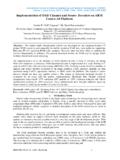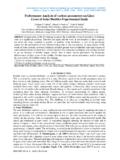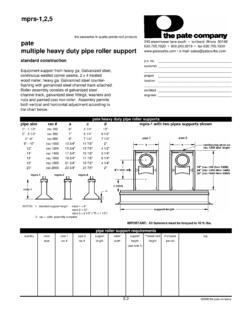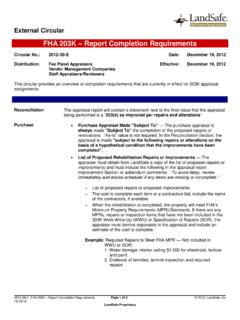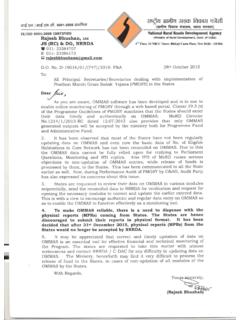Transcription of Improved Performance of Mobile Adhoc Network …
1 International Journal of Advance Engineer ing and Research Development (IJAERD) Volume 1,Issue 6,June 2014, e-ISSN: 2348 - 4470 , print-ISSN:2348-6406 @IJAERD-2014, All rights Reserved 1 Improved Performance of Mobile Adhoc Network through Effic ient Broadcasting Technique Vijay J Parmar Department of Computer Engineering,Sarvajanic College of Engineering and Technology Surat, Gujrat (India),E-mail add: Abstract-In Mobile Ad hoc Network to find a destination through a traditional flooding needs to send a route request to each and every node in the system. Traditional broadcasting using flooding causes the Redundancy, Network Congestion and Contention in the Network and thereby degrading the Performance of the Network . This is known as broadcast storm problem. In this report, various broadcasting techniques have been discussed and a new technique which gives the solution to the broadcast storm problem has been proposed.
2 Proposed technique select the next appropriate node for forwarding the route request packet based on the node degree and the knowledge of at most 2-hop from the given node. Proposed technique also uses the node velocity as the parameter to find the next best node to select. The proposed technique will give better result in Redundancy, Network Congestion and Contention in the Network . Bandwidth consumption will also less in the proposed technique which enhance the Network life. Keywords Broadcast, Mobile Adhoc Network MANET) , Redundancy, Network Congestion, Contention I. INTRODUCTION Wireless communication is currently one of the fastest growing technology in Mobile computing devices and wireless technology. Mobile devices like laptops, personal digital assistants, and Mobile phones have become very lightweight today to carry very easily now.
3 Wireless communication networks have many advantages networks. Major advantage of wireless networks is to allow anywhere/anytime connectivity. Wireless networks can be deployed in areas without a pre-existing wired-communication infrastructure or where it is difficult to lay cables. For example, in many places where it is difficult to carry out cable installation wireless Network is used. Wireless Network is more cheaply than the wired Network makes wireless networks a good option in the area which are less developed. Further, setup of the wireless Network is flexible and provides instantaneous communication. For Instance, Mobile user can immediately connect to the internet in any area like railway station, airport etc. There are two type of wireless Network defines by the IEEE standard: infrastructure-based and infrastructure less-based (or ad hoc) networks.
4 The infrastructure-based networks having special nodes that called access points (APs), which are connected via existing wired LANs. The APs are used to communicate with between Mobile nodes and the wired Network . II. ROUTING AND BROADCASTING IN MANET One of the most significant challenges in MAN ETs is to providing efficient routing protocols [1, 2]. In MANETs, packet travels from source to destination via intermediate nodes by forwarding it from one node to the next. The MANET protocols are classified in to three categories based on the routing information update mechanisms employed and route discovery: proactive (or table driven), reactive (or International Journal of Advance Engineer ing and Research Development (IJAERD) Volume 1,Issue 6,June 2014, e-ISSN: 2348 - 4470 , print-ISSN:2348-6406 @IJAERD-2014, All rights Reserved 2 on-demand driven) and hybrid.
5 Proactive routing protocols make up-to-date information about the route from each and every node in the Network . Whenever topology of the Network updates it propagated throughout the Network . Reactive routing protocols establish routes only when they are needed. In these protocols when a source node requires a route to a destination, source node sends the route request packet by flooding. The destination is replied by the route replay packet to the source node. Third type is a hybrid routing protocol that attempts to combine the best features of proactive and reactive algorithms. In the broadcasting a source node sends the same packet to all the nodes in the Network . In multi-hop MANETs, intermediate nodes needed in the broadcasting operation by retransmitting the packet to other remote nodes in the Network . Broadcasting operation uses the valuable Network resources such as node power and bandwidth.
6 Hence, it is important to carefully choose the intermediate nodes so as to avoid redundancy in the broadcasting process. Several broadcasting approaches have been suggested in the literature that including probabilistic, counter-based, location-based and neighbour-knowledge-based approaches [7, 8]. III. RELATED WORK The broadcast storm problem will cause the serious redundancy collision and contention. This avoided by reducing the number of nodes that forwarded the RREQ packets. Significant amount of research work is done to avoid the broadcast storm problem. N i et al. [7] classified the broadcast algorithm in to two categories: probabilistic and deterministic. William and Camp [3] have compared the Performance of several proposedBroadcast approaches including the probabilistic, counter-based, area based, neighbour-designated and cluster-based.
7 The following sections provide a brief description of each these approaches. A. Counter-Based Methods In this technique, when any node in the Network receives a broadcast packet, it initiates a random assessment delay (RAD). When the RAD expires, the node counts the number of time receiving the same broadcast packet. If the counter does not exceed a threshold value C, the node rebroadcast the packet otherwise node simply discard the packet. The counter value is the main parameter in this technique. N i et al. [7] have demonstrated that broadcast redundancy associated with simple flooding can be reduced while maintaining comparable reachability in a Network of 100 nodes, each with 500m transmission range placed on an area between 1500m x 1500m and 5500m x 5500m by using a counter based scheme with the value of C set to 3 or 4.
8 Methods This method is based on the additional coverage area. If additional coverage area is more than the node rebroadcast the RREQ packet otherwise node discards the RREQ packet. This additional coverage area is determined using the location-based method or distance-based method. If two nodes are not far away from each other, additional coverage area of the node that rebroadcast the RREQ packet is quite low [7]. In the ideal scenario, the node is located boundary of the transmission range of the source node; additional coverage area provided by that node is 61%, as in paper [8]. In the distance based scheme [7], the node compares the distance between itself and each neighbor node that previously forwarded a packet. Upon reception of packet, the node is initiated a random assessment International Journal of Advance Engineer ing and Research Development (IJAERD) Volume 1,Issue 6,June 2014, e-ISSN: 2348 - 4470 , print-ISSN:2348-6406 @IJAERD-2014, All rights Reserved 3 delay (RAD) and wait some time for redundant packets.
9 When the RAD expires, distance from the entire sender nodes are checked to see is any node is closer than the predefined threshold value. If the node is closer than the threshold value, the node is not rebroadcast. This method requires knowledge of the geographic locations of its neighbours to make a rebroadcast decision. A parameter like signal strength is used to find the distance between to the source of a received packet. In thismethod if GPS is available, node is easily finding destination location and includes their location information in each packet transmitted. This method does not economies the number of broadcast packets because the node still rebroadcast the packet if none of the transmission distances are below a given distance threshold even if node receive a broadcast packet many times. In the location based method [7, 8], each node is known its own position relative to other nodes with the use of GPS.
10 Whenever a node rebroadcast a RREQ packet it includes it location information in the header of the packet. When the neighbour node receives the RREQ packet, it calculates the additional coverage area based on the location information in the header if it were to rebroadcast. If additional coverage area is less than the predefined threshold, the node will discards the packet and all the future reception is also discarded. Otherwise the node initiated the RAD, receives the redundant packets during the RAD, calculate the additional coverage area and compare with the threshold. C. Neighbor K nowledge Based Methods These schemes [3, 7, 9] maintain the neighbor information via periodic exchange of hello packets. The main objective is to determine the subset of nodes which forward the RREQ packet. Below are some various neighbor-knowledge-based schemes.



